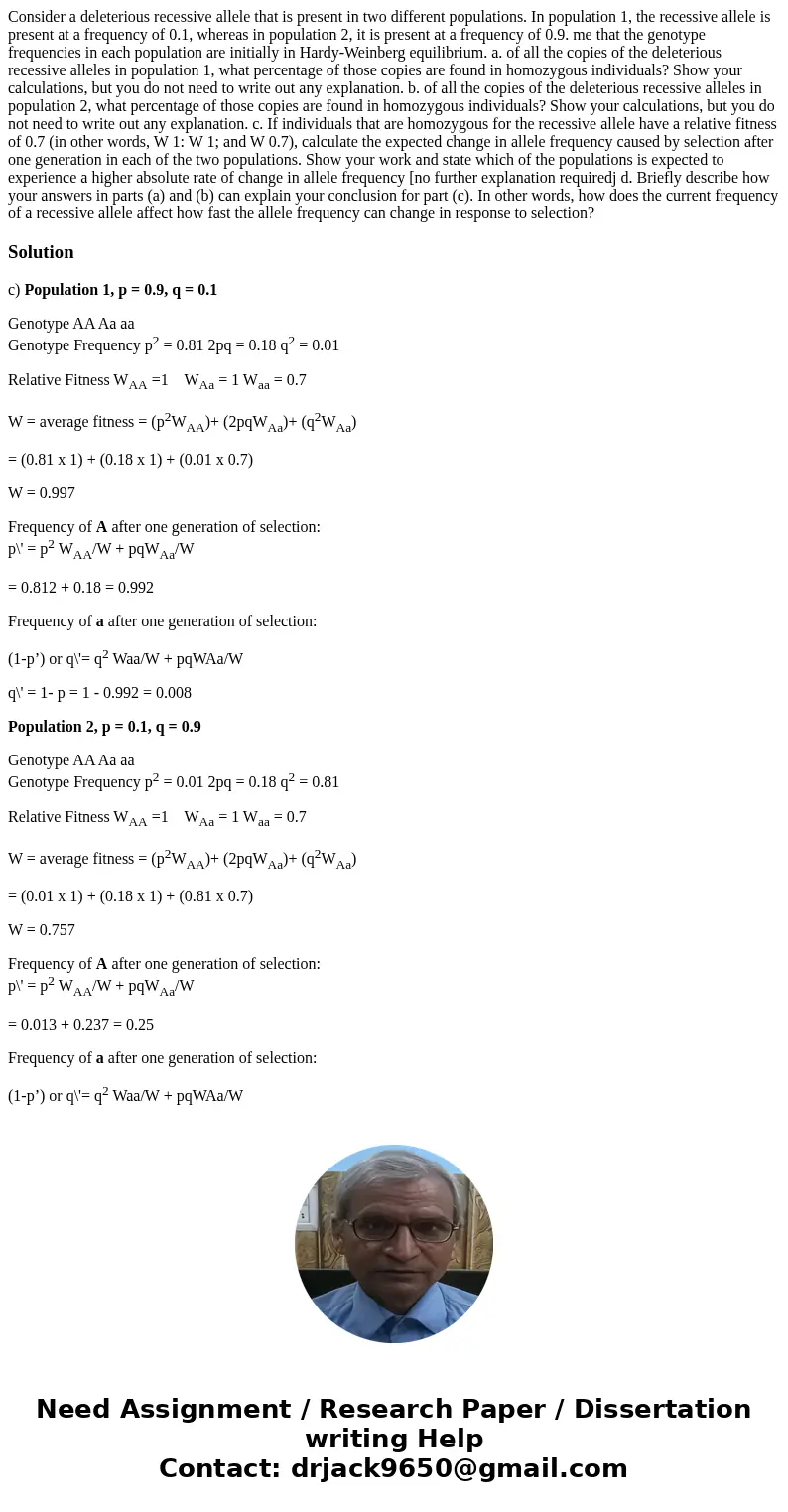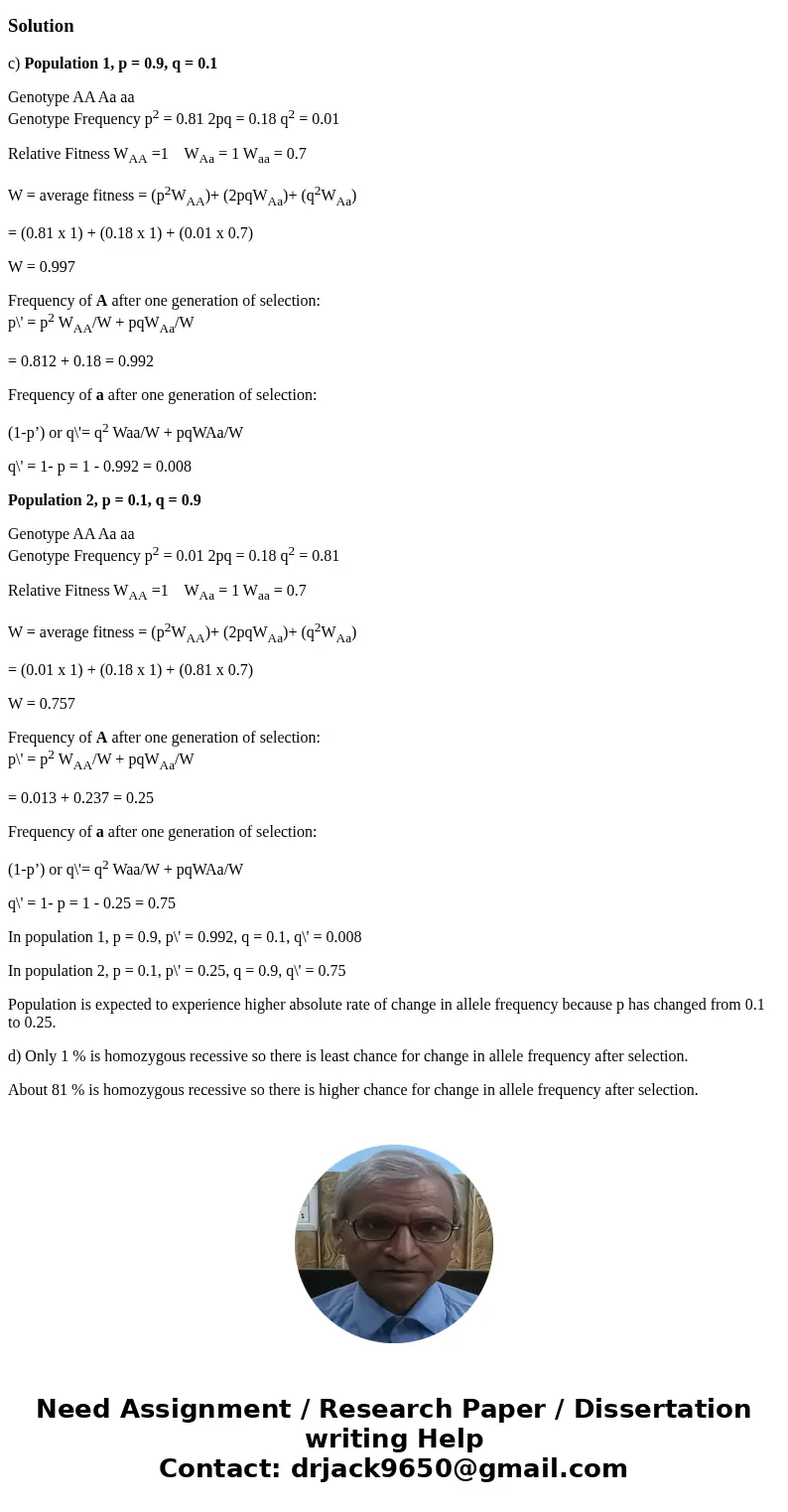Consider a deleterious recessive allele that is present in t
Solution
c) Population 1, p = 0.9, q = 0.1
Genotype AA Aa aa
Genotype Frequency p2 = 0.81 2pq = 0.18 q2 = 0.01
Relative Fitness WAA =1 WAa = 1 Waa = 0.7
W = average fitness = (p2WAA)+ (2pqWAa)+ (q2WAa)
= (0.81 x 1) + (0.18 x 1) + (0.01 x 0.7)
W = 0.997
Frequency of A after one generation of selection:
p\' = p2 WAA/W + pqWAa/W
= 0.812 + 0.18 = 0.992
Frequency of a after one generation of selection:
(1-p’) or q\'= q2 Waa/W + pqWAa/W
q\' = 1- p = 1 - 0.992 = 0.008
Population 2, p = 0.1, q = 0.9
Genotype AA Aa aa
Genotype Frequency p2 = 0.01 2pq = 0.18 q2 = 0.81
Relative Fitness WAA =1 WAa = 1 Waa = 0.7
W = average fitness = (p2WAA)+ (2pqWAa)+ (q2WAa)
= (0.01 x 1) + (0.18 x 1) + (0.81 x 0.7)
W = 0.757
Frequency of A after one generation of selection:
p\' = p2 WAA/W + pqWAa/W
= 0.013 + 0.237 = 0.25
Frequency of a after one generation of selection:
(1-p’) or q\'= q2 Waa/W + pqWAa/W
q\' = 1- p = 1 - 0.25 = 0.75
In population 1, p = 0.9, p\' = 0.992, q = 0.1, q\' = 0.008
In population 2, p = 0.1, p\' = 0.25, q = 0.9, q\' = 0.75
Population is expected to experience higher absolute rate of change in allele frequency because p has changed from 0.1 to 0.25.
d) Only 1 % is homozygous recessive so there is least chance for change in allele frequency after selection.
About 81 % is homozygous recessive so there is higher chance for change in allele frequency after selection.


 Homework Sourse
Homework Sourse